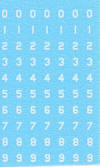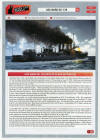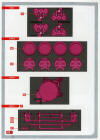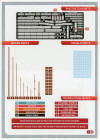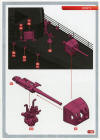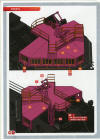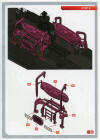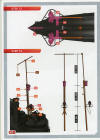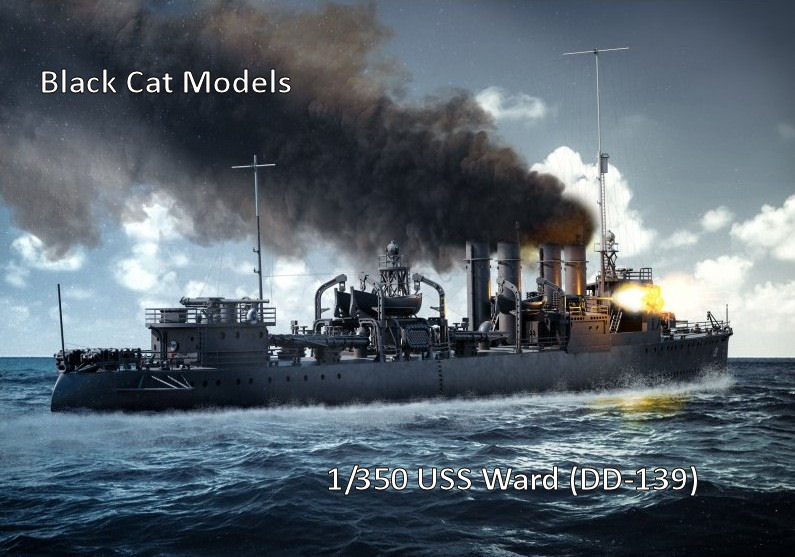
|
Reviewed July 2022 |
|
| HISTORY | |
|
USS Ward was a Wickes-class destroyer, built
as a result of the Naval Appropriation Act of 1916, which called for a navy
“second to none”. The act authorized orders for ten battleships, six
battlecruisers, ten scout cruisers, 50 destroyers, 72 submarines, and fourteen
auxiliaries. Originally funded in 1917, the Wickes-class was
supposed to consist of 50 ships. With subsequent hulls funded, the final
class size grew to 111 ships. Along with the 6 preceding Caldwell-class
and 156 subsequent Clemson-class destroyers, the Wickes-class
formed the "flush-deck" or "four-stack" type of destroyer.
Originally known as destroyer No. 139, Ward was laid down on 15 May 1918, by the Mare Island Navy Yard, and launched in a record 15 days, on 1 June 1918. Ward served in both the Atlantic and Pacific during her initial commissioning, before being decommissioned in 1921. One of the highlights of her early service was providing navigational aids and lifeguard station services as NC-1, NC-3, and NC-4 set out on their transatlantic flight. With war clouds brewing on the horizon, Ward, along with many of her 4-stack sisters, were recommissioned back into the fleet, Ward herself doing so on January 15, 1941. Shortly thereafter, she headed for Hawaii, and an eventual date with destiny. Throughout 1941, Ward conducted routine antisubmarine patrols in the Hawaiian area, as part of the Inshore Patrol command. As tensions continued to mount, the Commander in Chief, Pacific Fleet, Admiral Kimmel, ordered his inshore patrol to depth-charge any suspicious submarine contacts operating in the defensive sea areas. On the morning of Sunday, December 7, 1941, Ward was conducting one such routine patrol, albeit with a new commanding office, Lt William Outerbridge, who was on his second day on the job. Alerted to the possible presence of a submarine in the defensive area by the minesweeper Condor, Ward and her crew were on alert when, at around 6:37am, she spotted the small wake from the periscope of a submarine, trailing the cargo ship Antares, which was entering the harbor after the boom-net defenses had been opened. Going to general quarters, Ward attacked. Closing quickly at 25 knots, the crew of the number one 4in gun fired the first American shot of the Pacific War, at around 6:45 am...and missed. The crew of the number 3 4in gun then opened fire, scoring a direct hit on the conning tower of the Japanese midget submarine, which subsequently sank. As the destroyer passed overhead of the sinking sub, she also dropped four depth charges. Outerbridge radioed a report to the Commandant of the 14th Naval District, saying he had sighted and fired upon an unidentified submarine operating in the defensive area. Unfortunately, this report was dismissed as a probable false alarm, and didn't get the proper urgency attached to it. Shortly thereafter, Japanese planes descended upon Pearl Harbor, delivering their devastating attack on what became known as the "Day of Infamy" (post-attack, there was some doubt to Ward's claim that she hit and sank a submarine. All doubt was dispelled in August, 2002, when researchers from the University of Hawaii found the sunken Japanese mini-sub in 1,200 feet of water. The starboard side of her conning tower had one neat hole in it, courtesy of USS Ward's number 3 gun). Ward continued patrols in the Pearl Harbor area, before sailing for the west coast and conversion to a high speed transport, being re-designated ADP-16 when the conversion was complete. Post-refit, she headed to the South Pacific, where she immediately jumped into the fray, performing escort and transport duties as assigned, as well as participating in the invasion of Cape Gloucester, New Britain, in December, 1943. Other assignments included the Nissan Island landings, landings at Emirau Island, Aitape, New Guinea, and Cape Sansapor, among others. Her final battle came towards the end of 1944, ironically on December 7th. At part of a force landing troops at Ormac Bay in the Philippines, Ward was attacked by a vee of three "Betty" bombers, which were part of a larger air assault on the invasion fleet. Accurate fire from Ward hit the lead plane, but it subsequently crashed into Ward, right at the waterline, smashing through into the boiler room and troop spaces. One of the planes engines traveled all the way through the unfortunate Ward, coming out the other side. Explosions wracked the ship and thick black smoke billowed from her. Water pressure and steerage was lost and the ship lost it's way. Continued raging fires resisted efforts to be contained and brought under control, and eventually the order was given to scuttle the gallant Ward. The job fell to the destroyer USS O'Brien, commanded by one LCDR William Outerbridge, the same man who had commanded the Ward on 12/7/41. Now, three years later, he watched as his ships guns dispatched his first command, which sank at 1130 am. For more on the Wickes-class and the Ward, check out these online references, which provided the information for this brief history: Destroyer History Foundation: Wickes and Clemson Classes Destroyer History Foundation: USS Ward Wikipedia: USS Ward |

